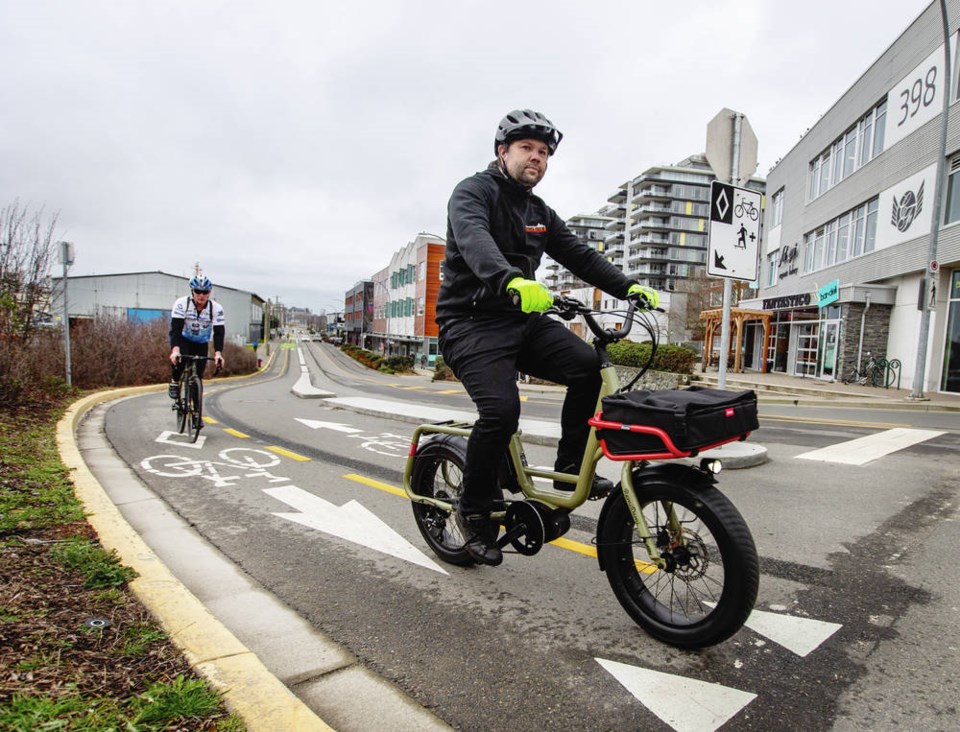The surge in popularity of electric bikes in recent years and the speeds they can reach is one of the catalysts that led the Capital Regional District to consider widening busy sections of the Galloping Goose and Lochside trails.
On Wednesday, the CRD regional parks committee recommended moving forward with public consultation on widening 6.6 kilometres of trail north of the Selkirk trestle to create separate paths for cyclists and pedestrians. The CRD board will have to approve the recommendation.
A third-party study on widening the trails identified the increasing use of electric bikes as one of several key issues for trail users.
“The introduction of electric bicycles in recent years has created challenges when mixed with other, non-power assisted trail users primarily due to the speeds that e-bikes can achieve. E-bikes are also generally larger and heavier than conventional bicycles, increasing the damage/injury that may occur in case of collision,” the report says.
Bill Fry, owner of Trek Bicycle Store, said electric bikes have been rapidly growing in popularity over the past three years. Many of the people getting on e-bikes are new to cycling or haven’t been a regular biker for a while, he said, which can lead to issues if someone takes the bike to its maximum speed, which is capped at 32 kilometres per hour. That’s a speed Fry can reach on his road bike, but he has years of experience.
“If you’re able to ride that fast, you’re an experienced cyclist, and you’re able to react to different situations. So if somebody gets on a bike and hasn’t ridden in years, all of a sudden they’re riding way faster and things are happening way quicker to them,” he said.
Fry said while e-bikes are great as a way to get people riding who wouldn’t otherwise, it’s important to get comfortable with the bike and learn good trail etiquette, like slowing down around pedestrians and letting people know when you’re passing.
“Just because the bike goes 32 km/h doesn’t mean you should go 32km/h,” he said.
Rebecca Mersereau, chair of the CRD’s regional parks committee, said she knows people have raised the issue of creating speed limits on regional trails, but it’s not something the CRD is considering.
Corey Burger, president of the Greater Victoria Cycling Coalition, said speed limits only work if the road or trail is designed to a certain speed, because cyclists, like motorists, tend to ride at a speed that’s comfortable for the roadway.
“Other places have speed limits and they have all the same challenges we have,” he said.
It would be too difficult to enforce a speed limit, as not all electric bikes are outfitted with speedometers, Burger said.
Instead of more regulation, governments should encourage use of electric bikes, because evidence suggests trips on an e-bike replace motor vehicle trips, he said.
regan-elliott@timescolonist.com



